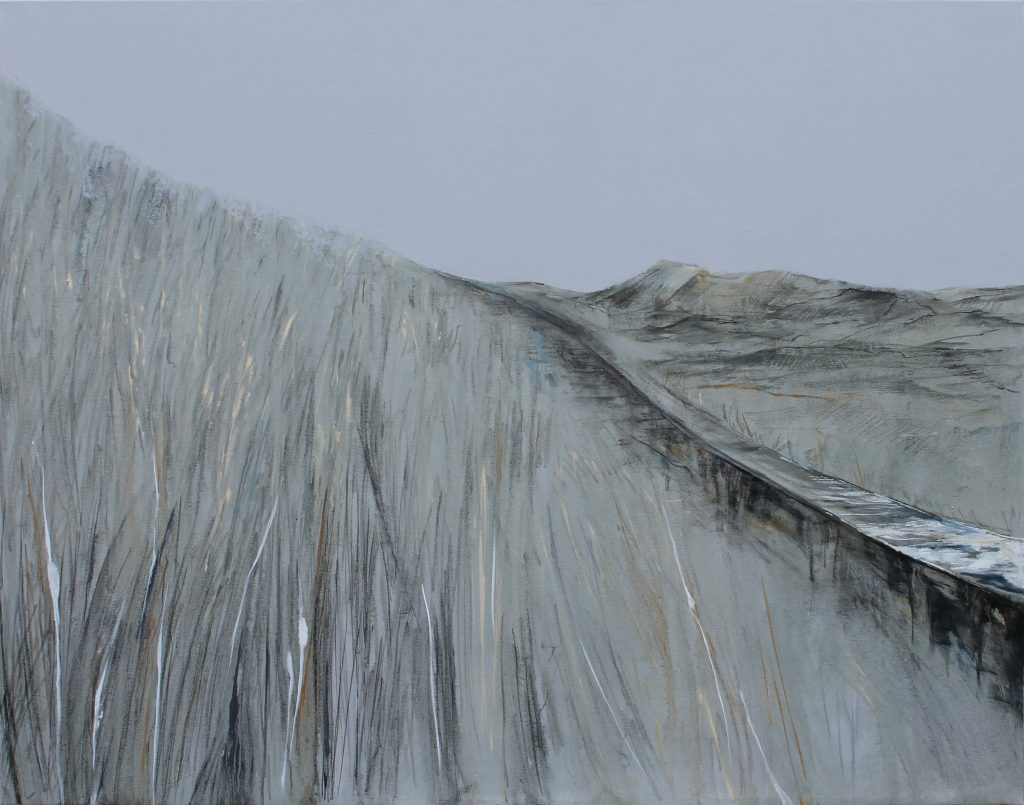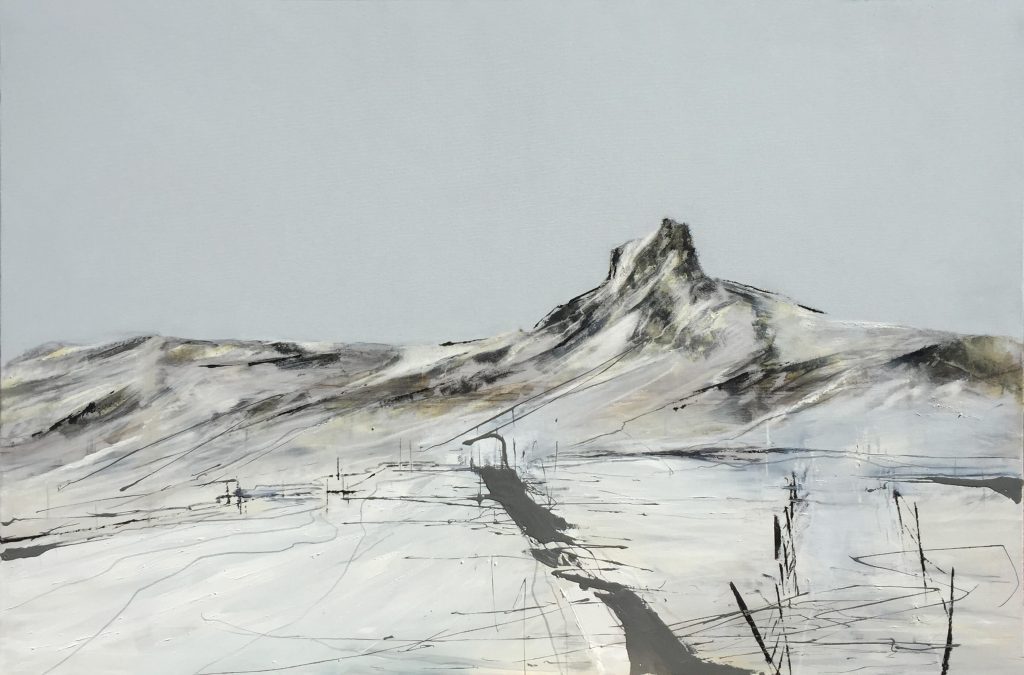Filiz Piyale carries an artistic and academic identity simultaneously, and the intellectual aspect of art is of utmost importance for her. We talked to Piyale, who believes that man can only find peace by confronting his tension with nature, about the origins of her artistic practice and her future projects.
When and how did you start painting?
I have been painting as long as I can remember. I discovered my interest in painting during my years in elementary school. I spent my entire school life doing the painting assignments of my classmates. I started doing oil paintings on the second year of my B.F.A. in Plastic Arts.
How did the Minimalist landscapes emerge? Do you depart from existing places that you have already seen or visited, or are they imaginary, mental spaces?
My landscape paintings began with a photograph I took in Bozcaada. A small, yellow building that was previously used as a slaughterhouse, was sitting alone in the midst of the rocks. Its texture didn’t belong there; but it was also well integrated into the nature. This building was the only human trace in that environment. This feeling of loneliness, tranquility and history influenced me deeply and made me embark on doing the “Salhane” series. On the other hand, I structure the places in my mind during my paintings’ production stage. I support these imaginary places with the details in the photographs I take in places I visit.

Why do you prefer working in series?
This doesn’t have a particular reason. I enjoy working on more than one painting simultaneously. I place the canvases around me and then I stand in the middle. I talk to one, and then to another. Meanwhile another one starts speaking and I approach that one. This way, all of them say what they want to say and then the subject is closed.
You have a multi-dimensional educational background ranging from sociology to graphic design, from fashion to painting. How do you think it influenced your art?
I think that nowadays, education in painting per se is not sufficient to make you a good artist. I believe that understanding and describing nature is only possible through a synthesis of various disciplines. In this sense, the contribution to my oeuvre of the education I received in different areas has been undeniable.
You’re also an artist working in the academia. What kind of relationship do these two roles have?
Academic life is multi-dimensional, involving activities including writing articles and theses or supervising theses and giving lectures. In addition to the intellectual infrastructure it provides you with, it also allows you to present, via your publications, your various artistic thoughts to the approval of the academic circles. Another advantage of being based at the university is to have several generations under the same roof. Here, while you are able to share your experiences and knowledge with future generations, you also have the chance to be in the same environment with Turkey’s leading artists. I have never wanted to be an artist spending her life in isolation in her studio. The social environment of the university that harbors a variety of disciplines keeps me fresh. One single sentence you hear from a math professor you bump into in the corridor can become a source of inspiration for the next series you will be working on.

The artists and the writers that you admire the most?
Around the time I started painting landscapes, Caspar David Friedrich, well-known for his allegorical landscapes as one of the leading German Romanticists, was the painter that had the greatest influence on me. There are way too many artists that I follow. These include Paco Pomet, David Hockney, Zaria Forman, Murat Akagündüz and Mustafa Ata. Alain de Botton, Hermann Hesse, Umberto Eco, Irvin D. Yalom, Gabriel Garcia Marquez, J. D. Sallinger, Hakan Günday and Vedat Türkali, on the other hand, are amongst the writers whose books I read with enthusiasm.
How did your paths cross with Art50.net? Your thoughts on online art platforms?
I first saw Art50.net in a social media feed. As I got curious and browsed the site, I encountered a platform created by professional hands, both in terms of content and design. And once I started working with them, I saw a smiling team always standing by the artists’s side. Even though online art platforms are a new thing for Turkey, I think their importance will increase exponentially in the future. It is crucial that online galleries are managed in accordance with international standards like Art50.net, so that they can turn into good alternatives to traditional galleries.
And your upcoming projects?
In the days to come, I hope to start working on a new series based on a subject matter that I will research into to support my PhD thesis. I have also been invited to Germany for the third time by Frise Gallery and Antona Municipality. This is the upcoming project that currently excites me the most. I will be able to participate to a workshop at the Altonale festival and exhibit the works I will have produced there.
Click for the artist page.

